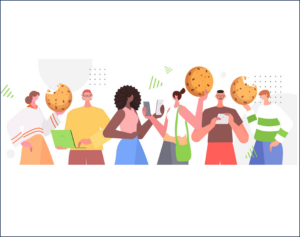Learning v Compliance Reporting and Tracking
In organisations of many types, compliance reporting and tracking have led to a compliance-driven approach to operations.
However, a paradigm shift is now underway in the not-for-profit sector. Having long struggled to get staff on board with compliance and policy implementation, many nonprofit agencies are shifting from a compliance-driven approach to a learning-focused one.
In this blog, we’ll explore why a learning approach to compliance is superior to compliance tracking and reporting for an organisation that is required to meet regulations and standards like the Social Sector Accreditation Standards, Community Housing Performance Standards and Ngā Paerewa Health and Disability Service Standards.

1. Fosters a Culture of Continuous Improvement
Unlike compliance reporting, which often focuses solely on meeting minimum requirements and is backward looking, a learning approach to compliance encourages ongoing growth and development. By prioritising learning, agencies can foster a culture of continuous improvement, where kaimahi/staff members are empowered to seek out new knowledge, skills, and best practices.
2. Learning approach aligns with non-profit kaupapa
Nonprofit agencies typically have a person/whānau centred kaupapa and value the concept of voluntariness highly. A learning approach to compliance aligns with this, particularly, these short online courses developed specifically for non-profit agencies in Aotearoa. The learning approach to compliance assumes that most people want to meet their obligations. It allows the broadest possible compliance at the least cost both to the agency and to the individual.

3. Compliance reporting and tracking
Agencies accept these as a necessary evil. But compliance reporting and tracking can incentivise fast tracking and a tick-box mentality in an organisation. This can ultimately undermine an organisation’s capacity to improve and build quality of service and reduce staff motivation to innovate and “go outside of the box.” Check out our previous blog about the disadvantages.

4. Drives Innovation and Creativity
Compliance reporting tends to focus on maintaining the status quo—ensuring that existing processes and procedures meet regulatory standards. In contrast, a learning program encourages staff members to think outside the box, explore new ideas, and experiment with innovative approaches. This is facilitated by interactive content like scenarios and quizzes in the Policy Place’s online courses.

5. Supports Engagement and Retention of Kaimahi
Research consistently shows that organisations that invest in employee learning and development experience higher levels of engagement and retention. A learning approach to compliance demonstrates to kaimahi that their growth and professional development are valued as much as the organisation values compliance with external standards. This contributes to greater job satisfaction and loyalty and to an organisation’s ability to retain and attract quality staff.

6. Builds skills and ability to comply
Interactive elements and engagement in online courses can help reinforce key concepts and information retention about requirements for compliance. They provide real-world examples and practical scenarios to illustrate how policy content is applied in different contexts.
This practical application helps staff understand the relevance of policy content and how it translates into everyday practices and decision-making. Ultimately, it means that staff are better prepared for and empowered to meet their obligations.
Conclusion
While compliance reporting serves an important function in ensuring accountability and regulatory adherence, its limitations are increasingly apparent in the nonprofit sector. By embracing a learning-focused approach, nonprofit agencies can unlock a wealth of benefits—from fostering a culture of continuous improvement to driving innovation and creativity.
Ultimately, investing in learning programs isn’t just about checking boxes; it’s about empowering staff, enhancing organisational resilience, and advancing the kaupapa of human service agencies.
